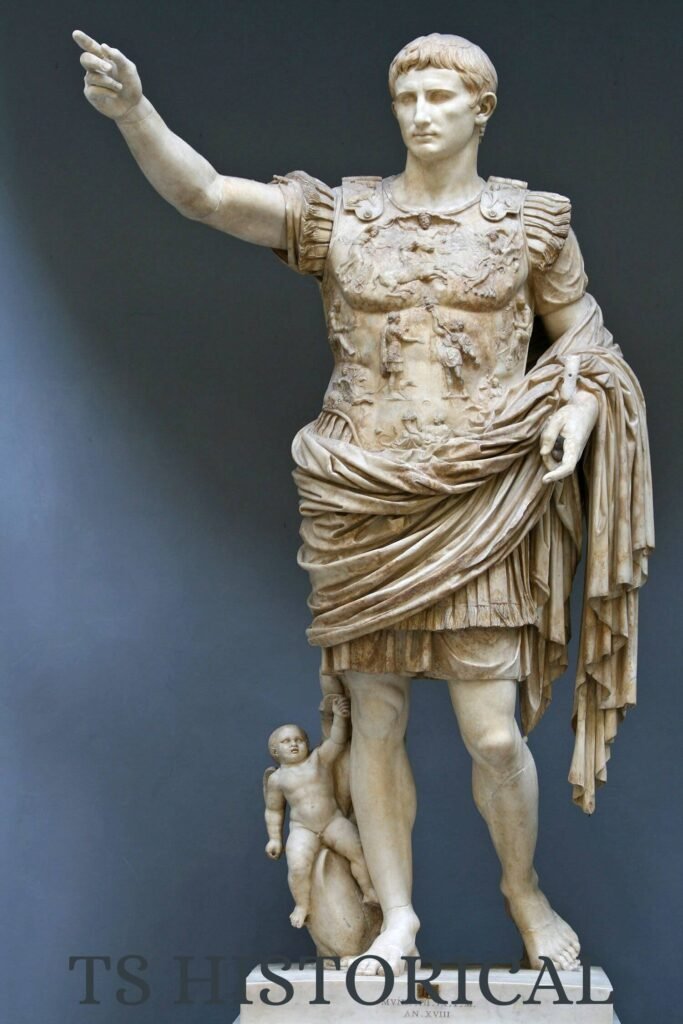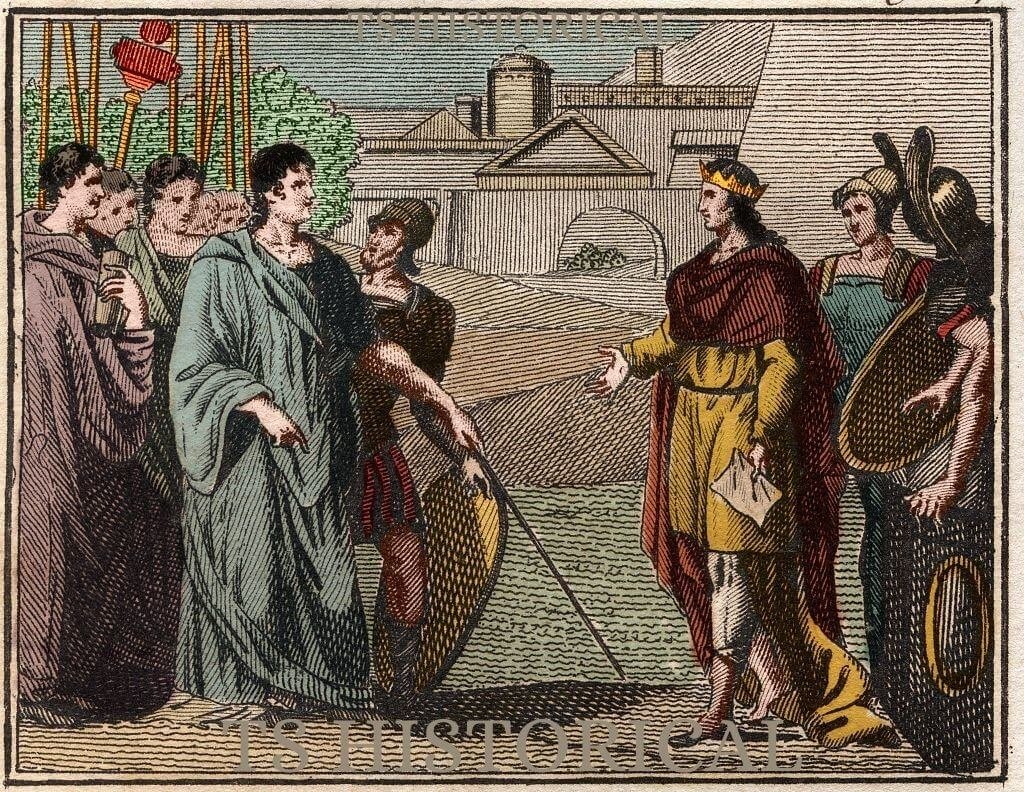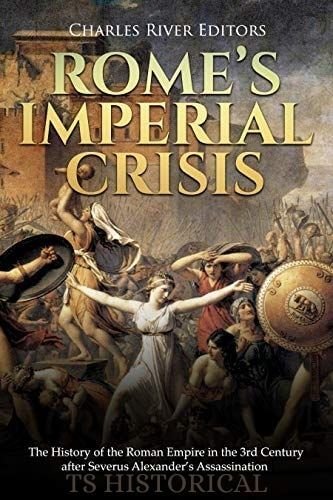Roman Empire | History, Time Period, Map, & Facts
The Roman Empire

Rome From Mythical Origins From law and politics to architecture and civil engineering, from literature and the arts to the very languages we speak, the Roman Empire’s echoes continue to be heard. The mythical origins of Rome’s foundation begin in the Latin city of Alba Longa. There, the twin newborn sons of the war god, Mars, and a priestess were sentenced to death by their great-uncle. Romulus and Remus were famously saved by a she-wolf and raised by a poor shepherd. As young men, they set out to establish their own city, but Remus was murdered by his brother in a dispute over its location. As king, Romulus declared Rome an “asylum city,” which very quickly attracted unsavory characters from across the Italian peninsula. Wives were needed for this mostly male population, so young women were abducted from neighboring cities and tribes, in an act immortalized as the “rape of the Sabine women.” Despite this, within a matter of years, Romulus and the king of the Sabines arranged to co-rule Roman Kings What happened next would be repeated throughout Rome’s history: the mysterious or violent death of the ruler. First, it was the Sabine king, Titus Tatius, who died during a riot. Then, Romulus disappeared during a storm. In the myth, he became the god Quirinus and left this earthly realm. He was likely killed by political rivals.

Numa Pompilius Second King of Rome
During the reign of the second king, Numa Pompilius, key Roman elements appeared, including the twelve-month calendar, the Vestal Virgins, and the position of Pontifex or priest. Numa was followed by five other kings, the last of whom, nicknamed Tarquin the Proud, not only murdered his predecessor but was overthrown by the people. Thus was the ‘free Republic of Rome’ born in the sixth century BCE. The Roman Republic Only a handful of aristocratic families, known as the patricians, held political and religious power. The plebeians, who made up the majority of Rome’s population, were excluded. However, between 494 and 287 BCE, protests brought about some change, including the formation of the Concilium Plebis, dedicated tribunes, and the Twelve Tables of written laws. Progress was slow, but eventually, the wealthy plebeians, or equestrian class, came to have the same rights as the patricians. However, many changes were only surface-deep, and nothing changed for the poor. In the years that followed, the Republic was in an almost constant state of war as it brought all of Italy under its control.
By 130 BCE, Rome was a Mediterranean superpower, having expanded into North Africa and Spain following the Punic Wars with Carthage. The consul, Marius reformed the military. By 102 BCE, soldiers were paid for their service and given farms upon retirement. Wealthy men used their money to create loyal private armies. Corruption and greed in Rome led to civil wars starting in 88 BCE, when Marius’ rival, General Sulla, marched his army into Rome. Sulla eventually won and became a consul. Julius Caesar In 49 BCE, Rome braced for civil war again as General Julius Caesar, the hero of Gaul, crossed the Rubicon River into Italy with his army. He was about to face off against both the Senate and his former friend and political partner, Pompey. Pompey mounted an unsuccessful military campaign. He was assassinated on the orders of Pharaoh Ptolemy XIII, who hoped to win favour from Caesar. Instead, a fateful meeting between Ptolemy’s sister, Cleopatra, and Caesar, led to a famous love affair and the Pharaoh’s death. Back in Rome, Caesar’s merciful treatment of his opponents had only increased his heroic status. The Senate declared him an absolute ruler for ten years, but Caesar overextended his powers. After he made himself Dictator for Life in 44 BCE, he effectively signed his own death warrant. On the Ides of March, he was stabbed to death by some 40 senators on the floor of the government building. The Liberators of the Republic faced the wrath of Romans. The civil war eventually erupted again, this time involving Caesar’s trusted friend, General Mark Anthony, Mark Anthony’s lover, Cleopatra, and Caesar’s nephew and heir, Octavian. Octavian emerged victorious with the deaths of Anthony and Cleopatra. Egypt, with its vital grain harvest, came under Rome’s control. The Republic had come to an end, and the Empire had begun.

The Early Roman Empire Octavian, renamed Augustus, was declared “emperor, son of the god Caesar” in 27 BCE. As the sole ruler, Augustus maintained at least an illusion that the Republic remained. While the Senate was still important, its real purpose was to give legitimacy to the Emperor’s decisions. Augustus’ 41-year-long rule was a golden age. Peace reigned; there was prosperity and stability, and culture flourished. Augustus developed a road network and courier system. In Rome, he formed a standing army and the Praetorian Guard, as well as dedicated police and fire departments. He also embarked on a vast rebuilding project for the city. The empire enlarged dramatically, stretching into central Europe, and the conquest of Spain was completed. Losing three legions in Germania in 9AD, however, brought an end to Rome’s expansion into that province. When Augustus died in 14 AD, his stepson, Tiberius, succeeded him. He was a competent but disinterested ruler. Instead, he delegated power to Sejanus, the ambitious commander of the Praetorian Guard. After Sejanus had Tiberius’ heirs murdered, the Emperor went on a paranoia-fuelled killing spree, convinced he was surrounded by enemies. Ironically, he may have been killed by his successor, Caligula, in 37 AD. Although Caligula was popular at first, soon, his true nature emerged. Over the space of a four-year rule, he declared himself a living god, executed many people killed, including family members, and embarked on incestuous liaisons with his sisters. The Praetorian Guard murdered him and appointed his uncle Claudius in his place. Claudius never expected to be emperor. Various physical challenges meant he had lived as a scholar away from public view. Despite his lack of experience, Claudius was a good administrator and ordered building many roads, aqueducts, and canals across the empire. During his 13-year reign, the successful conquest of Britain began. In 54 AD, he died, possibly at the hands of his fourth wife, making way for her son, Nero. Everyone knows the story that Nero “fiddled while Rome burned.” He blamed the devastating Great Fire of 64 AD on the Christians, who were a troublesome sect. The fire distracted the public from the empire’s empty coffers due to his overspending. Nero was widely despised and routinely dispatched his opponents. Eventually, the army and Praetorian Guard mutinied, and the Senate declared him an enemy of Rome, leading to his suicide in 68 AD.

The Flavians Nero left no heir. Over the following year, four men vied for the throne. It was the fourth, a general from the equestrian class called Vespasian, who triumphed in 69 AD. Vespasian worked hard during his 10-year reign, restoring the empire’s finances, and erecting many important buildings, including the symbol of Rome itself, the Colosseum. The looted treasures of the temple in Jerusalem bankrolled much of this building work. Vespasian had been the governor of Judea before becoming Emperor, and his son, Titus, made a name for himself by putting down the Jewish resistance in that province. Titus governed for only two years before his brother succeeded him in 81 AD. Domitian had an autocratic streak but seemed to have the support of both the public and the military. Rome prospered under him during his 15-year rule. But he got on the wrong side of court officials who had him murdered. The Nerva-Antonine Dynasty The second century AD was an era of relative stability under the Nerva-Antonine emperors. Unusually, they were mostly adopted by their predecessors rather than being their biological heirs. They included men such as Trajan, a charismatic military commander, who expanded the empire from the Caspian Sea all the way to Scotland; Hadrian, whose famous wall formed a bulwark against marauding Scottish tribes in Britannia; and the philosopher-warrior, Marcus Aurelius. His son, Commodus, was an incompetent egomaniac who fancied himself a gladiator. He was strangled by his trainer on the orders of the Praetorian prefect in 192 AD.

Imperial Crisis
The Late Roman Empire Commodus’s death was the opening act in a century-long period known as the Imperial Crisis. Twenty-nine emperors came to power through plots and violent death over five decades. In 284 AD, Diocletian, a former soldier, sought to end the chttps://www.tshistorical.com/the-roman-empire/haos. He split the empire into two: he ruled the eastern portion, which was mainly Greek, and his friend, Maximian, the western part, which was Latin. They were senior emperors with the title of “Augustus”. Each half was further divided and governed by junior emperors or “Caesars”. This tetrarchy or “rule of four” only lasted about 30 years, but it created peace and stability. Christians did not fare well under the new regime as they refused to worship Diocletian. who had styled himself the embodiment of Jupiter on Earth. Churches were torn down, sacred writings burned, and followers persecuted. Paradoxically, this only made Christianity stronger, and ultimately led to the abdication of both Diocletian and Maximian in 305 AD.

Fall of The Western Roman Empire
In-fighting over who would legally succeed them ensued. Constantine, the son of the former western Caesar, emerged victoriously. Constantine the Great Once the ruler of the Western Empire, Constantine legalized Christianity, claiming that Christ had led him to victory over his rivals. However, he made sure not to alienate those who still followed the old religions. In the east, his counterpart, Licinius, had persecuted the sizeable Christian minority out of fears they would rise up in support of Constantine. In 324 AD, Constantine and Licinius clashed in Byzantium. Constantine’s win saw east and west united under one ruler. In the years that closely followed, Christianity flourished, and many of the less savoury practices of the past were banned, such as ritual sacrifices, gladiatorial games, and crucifixion as a form of execution. In just six short years, a magnificent new Roman capital was established in the ancient city of Byzantium. New Rome, as it was known during Constantine’s life, lay between the eastern and western edges of the empire on important trade routes. Eventually renamed Constantinople, it attracted people from across the empire in search of a better life. In time, the empire was split into east and west again. In 476 AD, the Western Roman Empire fell after years of fending off the military and political intrigues of barbarian interlopers. The Eastern Empire continued on as the Byzantine Empire, finally collapsing under the might of the Ottoman Turks in 1453. After almost a millennium, the Roman Empire had come to an end.

Comments
Post a Comment